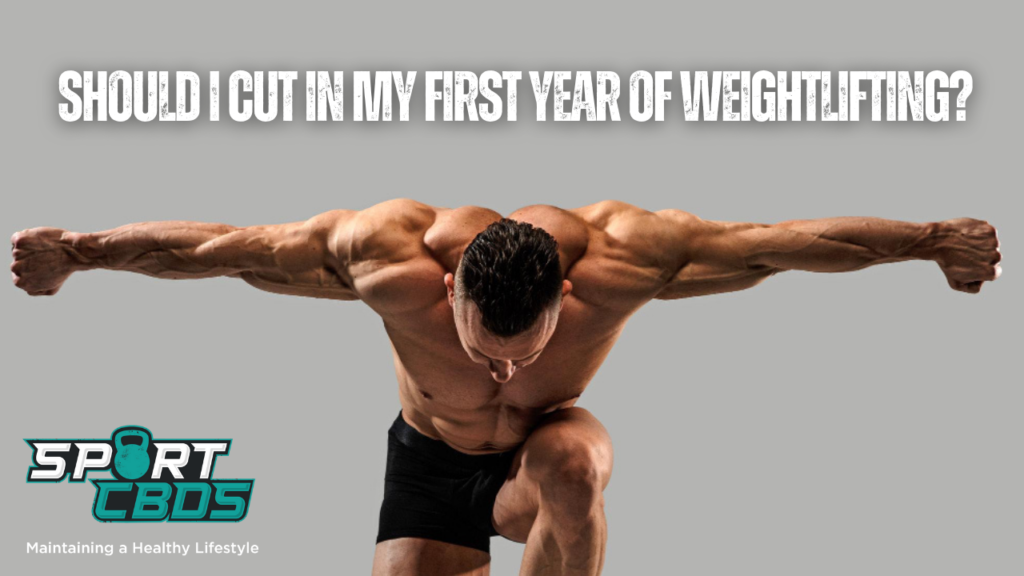
Should I Cut in My First Year of Weightlifting? A Beginner’s Dilemma
As a beginner in weightlifting, you’ve probably heard the terms “bulking” and “cutting” thrown around quite a bit. You might be wondering which path is the right one for you, especially in your first year of weightlifting.
The debate on whether to cut or bulk first can be confusing and frustrating. This article aims to shed light on this topic and help you make an informed decision based on your individual goals and body composition.
Should I Cut in My First Year of Weightlifting?
Deciding whether to cut or bulk in your first year of weightlifting depends on your goals, body composition, and lifestyle. Cutting sheds body fat while preserving muscle, whereas bulking builds muscle mass, potentially gaining some body fat. Beginners with higher body fat may benefit from cutting, and achieving a leaner physique and muscle definition. Proper nutrition and training can maintain or even build muscle while cutting, allowing strength gains. Conversely, lean beginners might benefit from focusing on muscle building, capitalising on rapid “newbie gains”. Building a solid foundation of strength and muscle mass supports future cutting and bulking cycles. Proper nutrition, training, and recovery are essential for both cutting and bulking.
Let’s now look in more detail at the pros and cons of cutting and bulking in your first year of weightlifting.
Cutting vs. Bulking: Understanding the Basics
Before diving into the debate, let’s first define cutting and bulking. “Cutting” refers to the process of losing body fat while maintaining muscle mass, while “bulking” is the process of building muscle mass, which may involve gaining some body fat.
The primary goal of cutting is to achieve a leaner physique by reducing body fat, while the main objective of bulking is to increase muscle size and strength. Though these processes may seem mutually exclusive, they share similarities, such as the need for proper nutrition, training, and recovery.
Factors to Consider Before Deciding
When deciding whether to cut or bulk first, consider the following factors:
Current body composition: Your body fat percentage and muscle mass play a significant role in determining which path is right for you. If you have a higher body fat percentage, cutting might be more beneficial. On the other hand, if you’re already lean, bulking may be the better choice.
Training experience and current fitness level: Beginners tend to benefit more from focusing on building a foundation of strength and muscle mass.
Personal goals and preferences: Your individual goals, such as competing in a specific sport or achieving a desired physique, should guide your decision.
Lifestyle factors: Diet, time commitment, and other lifestyle factors should be taken into account when deciding between cutting and bulking.
The Case for Bulking in the First Year
There are several reasons why bulking may be the better choice for beginners in their first year of weightlifting:
Building a solid foundation: Focusing on muscle building in the initial stages helps create a solid foundation of strength and muscle mass. This foundation will serve as the basis for future cutting and bulking cycles.
Newbie gains: Beginners can experience rapid muscle growth and strength gains in their first year of training, also known as “newbie gains.” Capitalizing on these gains by focusing on building muscle can lead to significant progress.
Take, for example, John, a beginner weightlifter who decided to bulk in his first year. By focusing on progressive overload and a calorie surplus, John experienced significant muscle growth and strength gains. As a result, when he eventually transitioned to cutting, he had a solid foundation of muscle mass, making it easier to achieve a lean and muscular physique.
The Case for Cutting in the First Year
For those with higher body fat percentages, cutting might be a more suitable choice in the first year of weightlifting. Here’s why:
Improved muscle definition: Achieving a leaner physique before building muscle can make it easier to see muscle growth and definition as you progress.
Muscle preservation: With proper nutrition and training, it’s possible to maintain or even build muscle while cutting. This means you can still experience strength and muscle gains while shedding body fat.
Consider Sarah, who started her weightlifting journey with a higher body fat percentage. She decided to focus on cutting in her first year, which allowed her to lose body fat and achieve a leaner physique. By implementing a structured training program and proper nutrition, Sarah was able to preserve and even build some muscle while cutting. Once she reached her desired level of leanness, Sarah was in a better position to focus on building muscle mass.
Related: Is It Better To Workout In Sets Or Until Failure?
The Importance of Nutrition and Training
Regardless of whether you choose to cut or bulk in your first year of weightlifting, proper nutrition and training are essential for success.
Nutrition: A well-balanced diet plays a crucial role in both cutting and bulking phases. When cutting, focus on maintaining a calorie deficit while consuming adequate protein to support muscle preservation. On the other hand, during bulking, aim for a calorie surplus with a balanced macronutrient ratio to promote muscle growth.
Training: A structured and progressive training program is vital for achieving your goals. Incorporate compound exercises that target multiple muscle groups and prioritize progressive overload to ensure continuous progress. Don’t forget to adjust your training program based on your goals, whether cutting or bulking.
Rest and recovery: Adequate rest and recovery are crucial for optimal results. Ensure you’re getting enough sleep and consider incorporating rest days and deloading periods into your training schedule.
Individualised Approach: Finding What Works for You
Ultimately, the decision to cut or bulk in your first year of weightlifting should be based on your individual goals, preferences, and body composition. Don’t be afraid to experiment and find the approach that works best for you. Consider seeking guidance from professionals or experienced lifters, and don’t hesitate to ask questions or seek advice.
Track your progress by taking progress pictures, logging workouts, and regularly measuring body composition. Make adjustments to your nutrition and training as needed to stay on track with your goals.
FAQs
When should I start cutting weightlifting?
The decision to start cutting depends on your individual goals, body composition, and preferences. If you have a higher body fat percentage or want to achieve a leaner physique, cutting may be beneficial. Make sure to incorporate proper nutrition and training to preserve muscle mass while losing body fat.
What happens after 1 year of weightlifting?
After one year of consistent weightlifting, you can expect increased strength, muscle mass, and improved body composition. Beginners typically experience significant “newbie gains” during their first year, which may taper off as they progress. The key to continued progress is adjusting your training, nutrition, and recovery strategies.
Should I cut or bulk as a beginner?
As a beginner, consider factors such as your current body composition, personal goals, and lifestyle when deciding between cutting or bulking. If you have a higher body fat percentage, cutting might be more suitable, while those who are leaner may benefit from focusing on muscle building.
Should I bulk or cut at 20% body fat?
At 20% body fat, it’s generally recommended to focus on cutting to achieve a leaner physique before transitioning to a bulking phase. Proper nutrition and training can help maintain or even build muscle while cutting.
Can I just cut and not bulk?
Yes, you can choose to cut without bulking, especially if you’re content with your current muscle mass and prefer maintaining a leaner physique. Make sure to follow a well-structured training program and proper nutrition to preserve muscle mass during your cutting phase.
At what body fat percentage do abs show?
Abs typically become visible at a body fat percentage of around 10-14% for men and 16-20% for women. However, these numbers can vary depending on individual genetics and muscle development.
How long should a cut last?
The duration of a cut depends on factors such as your starting body fat percentage, desired leanness, and personal preferences. Most cutting phases last anywhere from 8-16 weeks. It’s essential to monitor your progress and adjust your nutrition and training accordingly to avoid losing too much muscle mass.
Related: Why Do I Look Muscular But Have No Strength?
Final thoughts…
The decision to cut or bulk in your first year of weightlifting is highly individualised and should be based on your personal goals, preferences, and body composition. By understanding the basics of cutting and bulking, considering the factors that influence your decision, and focusing on proper nutrition and training, you can make an informed choice that will set you on the path to success.
Remember, there’s no one-size-fits-all approach, and what works for someone else may not work for you. Stay open to experimentation, be patient, and enjoy the journey as you progress towards your fitness goals.
What are your thoughts on cutting and have these tips helped? Let us know in the comments below.
If you enjoy sports and use CBD to help with your recovery in between gruelling workouts, then you are in the right place. Here at Sport CBDs, we train hard and recover the best way possible…
We have regular workouts (check out the YouTube channel), CBD news and CBD products to help you gain that edge!
If you wanted to check out the reputable CBD we have on offer here at the site, then please head to the Sport CBDs Store (CLICK HERE). We also do fitness clothing and yoga accessories too.
Until next time, all the best…
Lee
Founder – Sport CBDs
Featured Image Attribution – Image by fxquadro on Freepik


